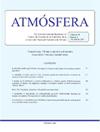不同机器学习方法在能见度预测中的可用性研究
IF 1
4区 地球科学
Q4 METEOROLOGY & ATMOSPHERIC SCIENCES
引用次数: 3
摘要
雾霾污染是中国目前面临的主要环境问题之一,其主要特征是能见度低。准确的雾霾预报有助于实施预防措施,控制空气污染物的排放,从而减轻雾霾污染。然而,准确预测雾霾所致的低能见度事件并不容易,这不仅需要对天气要素进行准确预测,还需要对源排放清单进行精细化和实时更新。为了获得可靠的预测工具,本文研究了几种流行的机器学习方法,如支持向量机、k近邻、随机森林以及几种深度学习方法在可见性预测上的可用性。从影响能见度的主要因素出发,讨论了风速、风向、温度、湿度和能见度之间的关系。使用机器学习方法进行训练和预测。通过几个参数(即均方根误差、平均绝对误差和平均绝对百分比误差)验证了这些方法在能见度预报中的准确性。结果表明:(1)各气象参数中风速最能反映能见度变化模式;(2) RNN LSTM方法和GRU方法在短期能见度预测上的表现几乎相同。1h、3h、6h);(3)经典机器学习方法(即支持向量机)在中长期能见度预测中表现良好;(4)机器学习方法即使在较长时间内(如72h)也具有一定的预测精度。本文章由计算机程序翻译,如有差异,请以英文原文为准。
Research on the usability of different machine learning methods in visibility forecasting
Haze pollution, mainly characterized by low visibility, is one of the main environmental problems currently faced by China. Accurate haze forecasts facilitate the implementation of preventive measures to control the emission of air pollutants and, thereby mitigate haze pollution. However, it is not easy to accurately predict the low visibility events induced by haze, which requires not only accurate prediction for weather elements, but also refined and real-time updated source emission inventory. In order to obtain reliable forecasting tools, this paper studies the usability of several popular machine learning methods, such as support vector machine, k-nearest neighbor, random forest, as well as several deep learning methods, on the visibility forecasting. Starting from the main factors related to visibility, the relationships between wind speed, wind direction, temperature, humidity, and visibility are discussed. Training and forecasting were performed using the machine learning methods. The accuracy of these methods in visibility forecasting was confirmed through several parameters (i.e., root-mean-square error, mean absolute error, and mean absolute percentage error). The results show that: (1) Among all meteorological parameters, wind speed was the best at reflecting the visibility change patterns; (2) RNN LSTM, and GRU methods performs almost equally well on short-term visibility forecasts(i.e. 1h, 3h, and 6h); (3) A classical machine learning method (i.e. the SVM) performs well in mid- and long-term visibility forecasts; (4) The machine learning methods also have a certain degree of forecast accuracy even for long time periods (e.g. of 72h).
求助全文
通过发布文献求助,成功后即可免费获取论文全文。
去求助
来源期刊

Atmosfera
地学-气象与大气科学
CiteScore
2.20
自引率
0.00%
发文量
46
审稿时长
6 months
期刊介绍:
ATMÓSFERA seeks contributions on theoretical, basic, empirical and applied research in all the areas of atmospheric sciences, with emphasis on meteorology, climatology, aeronomy, physics, chemistry, and aerobiology. Interdisciplinary contributions are also accepted; especially those related with oceanography, hydrology, climate variability and change, ecology, forestry, glaciology, agriculture, environmental pollution, and other topics related to economy and society as they are affected by atmospheric hazards.
 求助内容:
求助内容: 应助结果提醒方式:
应助结果提醒方式:


